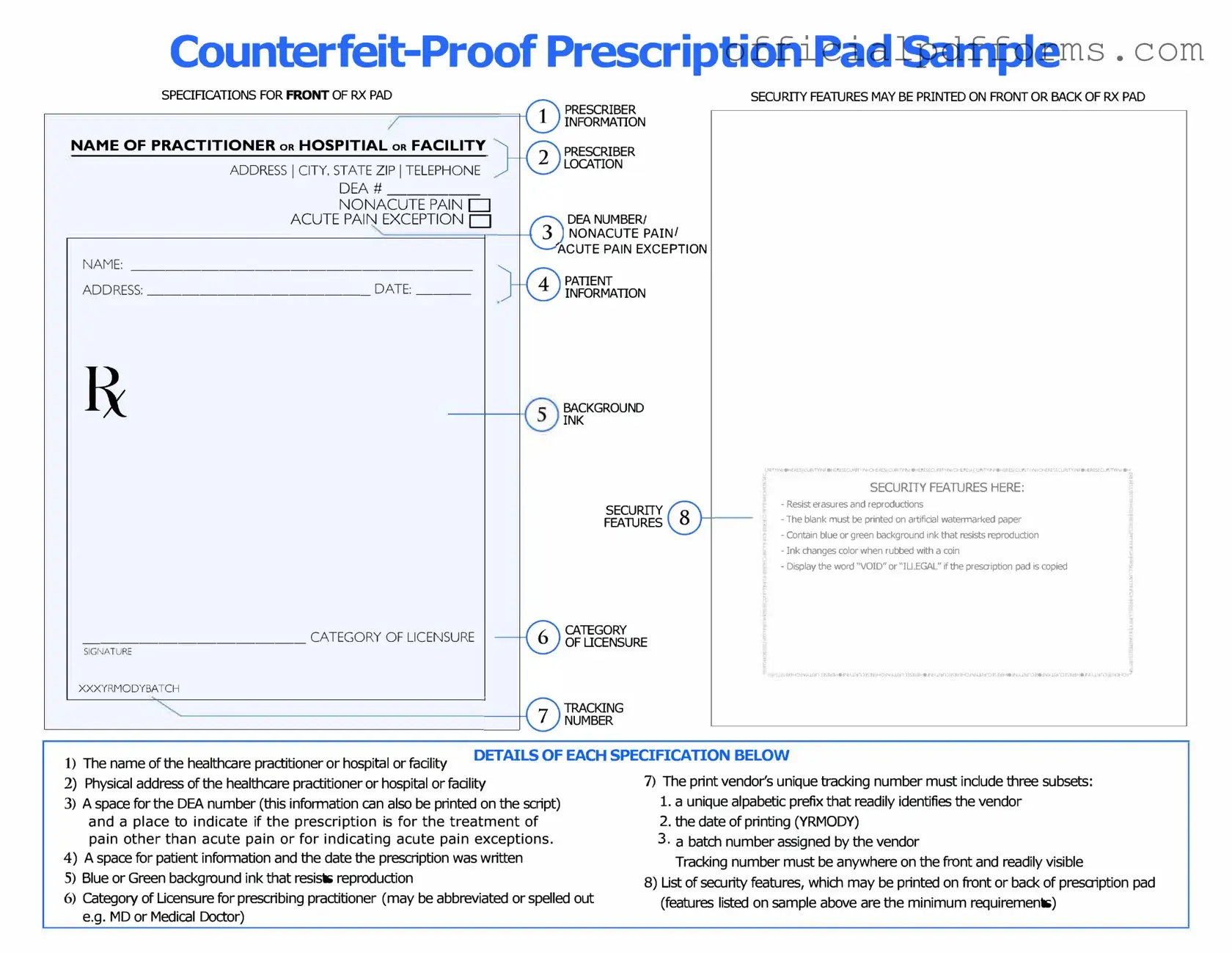A Prescription Pad form is a document used by healthcare providers to prescribe medication to patients. It typically includes the patient's information, the prescribed medication, dosage, and instructions for use. This form is essential for ensuring that patients receive the correct treatment as intended by their healthcare provider.
Only licensed healthcare professionals, such as doctors, nurse practitioners, and physician assistants, can issue a Prescription Pad form. These professionals have the authority to evaluate patients and determine appropriate medications based on their medical needs.
A typical Prescription Pad form should include the following information:
-
Patient's name and contact information
-
Provider's name, contact information, and signature
-
Date of the prescription
-
Medication name, dosage, and form (e.g., tablet, liquid)
-
Instructions for use (e.g., frequency, duration)
-
Refill information, if applicable
Including all these details helps prevent errors and ensures that the pharmacy can fill the prescription correctly.
Yes, a Prescription Pad form can be used for controlled substances, but there are specific regulations that must be followed. Providers must comply with federal and state laws regarding the prescribing of controlled substances. This may include using special prescription pads that are tamper-resistant and include unique identifiers.
The validity of a Prescription Pad form varies by state and the type of medication prescribed. Generally, a prescription for non-controlled substances may be valid for up to one year, while prescriptions for controlled substances often have shorter validity periods, typically ranging from 5 to 30 days. Always check local regulations for specific guidelines.
If a Prescription Pad form is lost, it is crucial to notify your healthcare provider immediately. They may need to issue a new prescription to prevent unauthorized use. Additionally, if the prescription was for a controlled substance, reporting the loss to local authorities may be necessary to prevent potential misuse.
